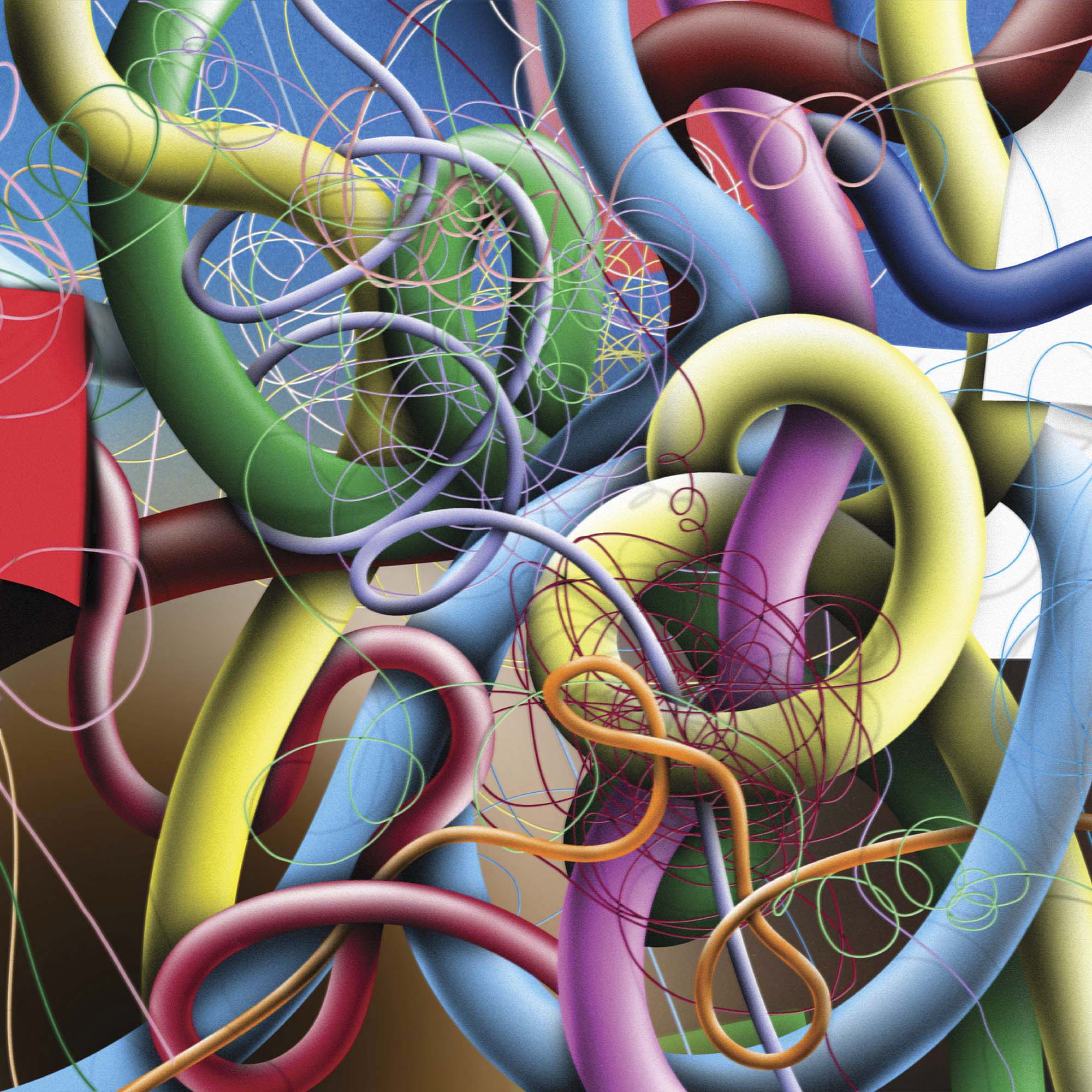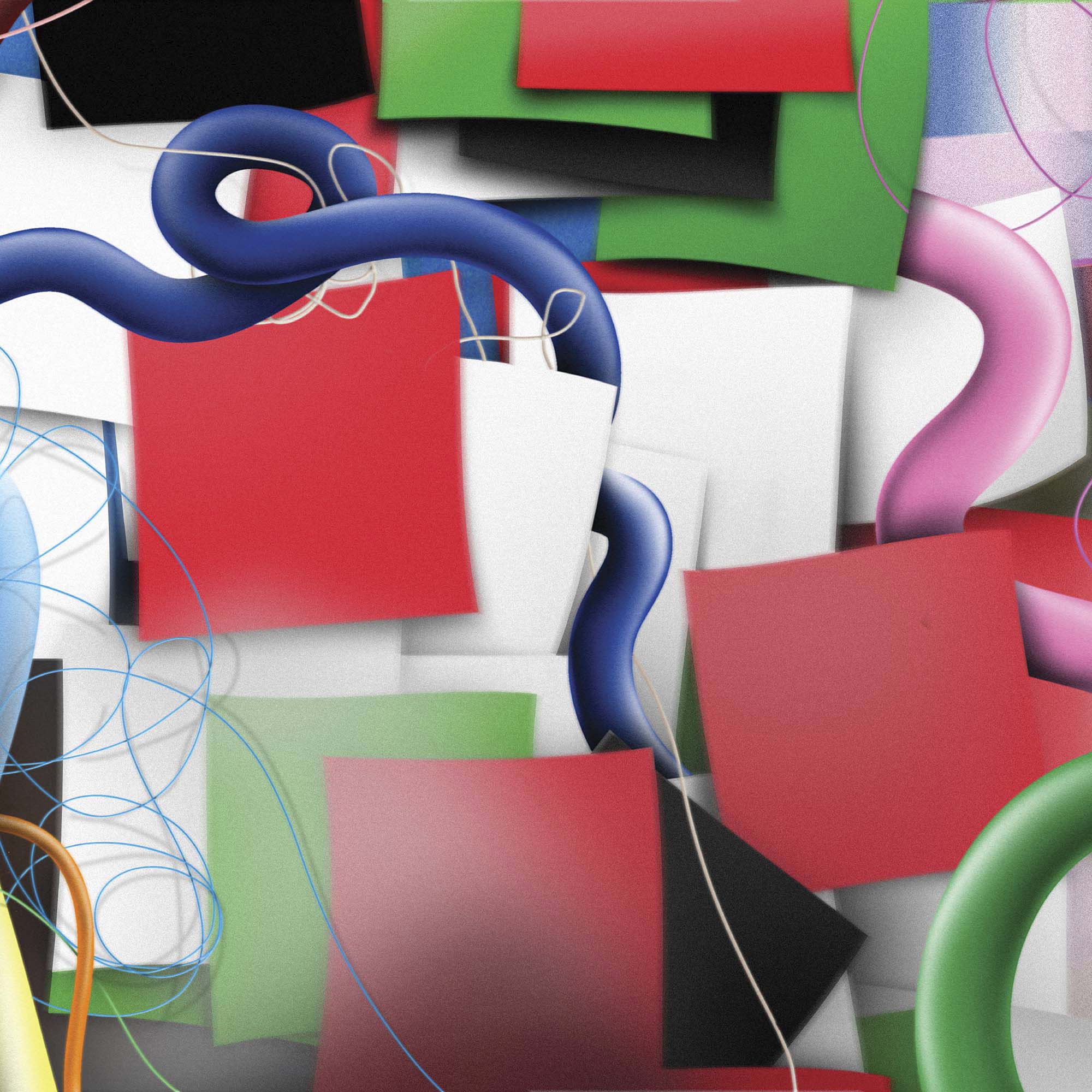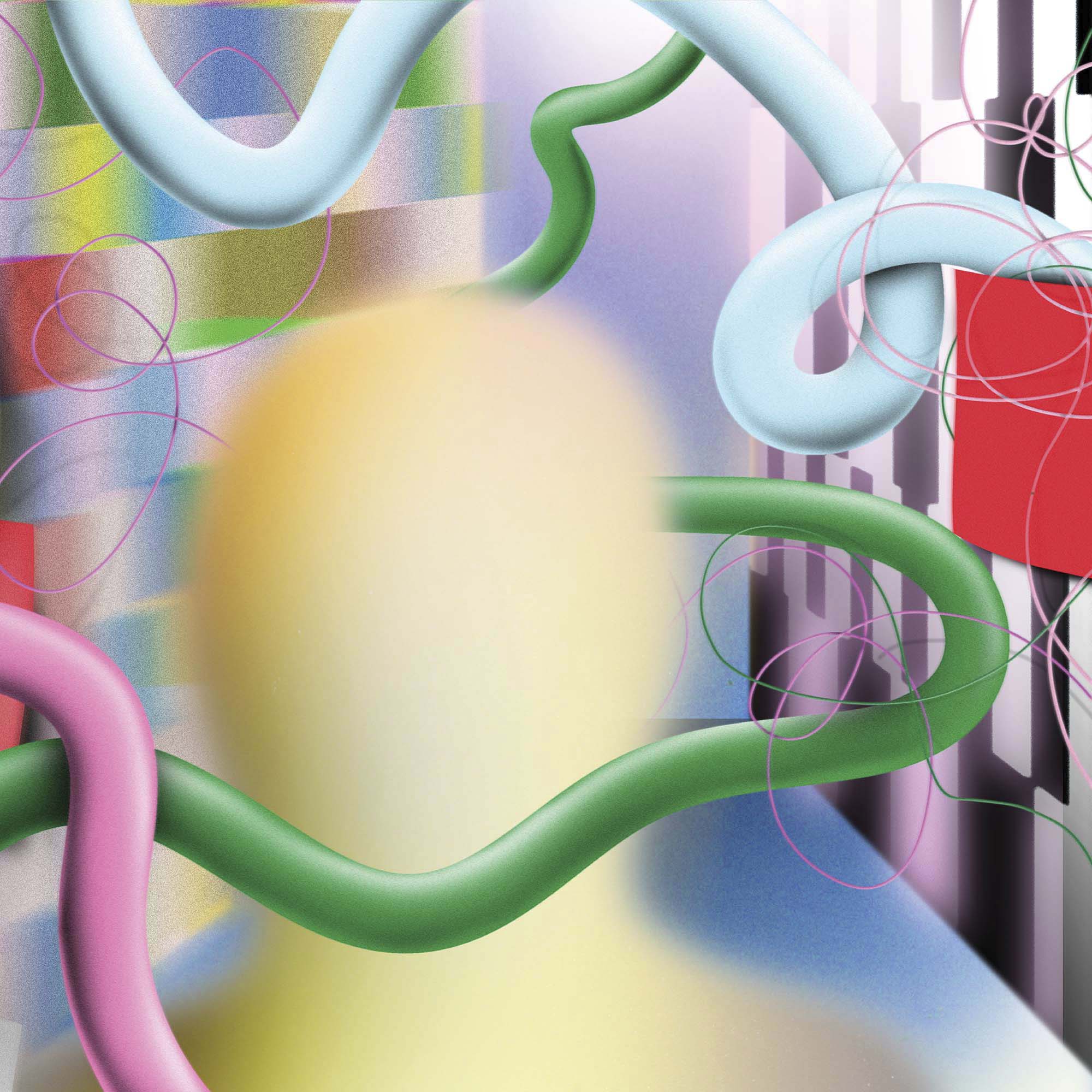(219)
Kexin Hao, Total Body Workout.

(190)
Like sub-cultures, conversations, arguments, chance meetings.
(191)
James Bridle, Ways of Being, 2022

(192)
Ecology is the study of the relationships among living organisms, including humans, and their physical environment. Ecology considers organisms at the individual, population, community, ecosystem, and biosphere level. (wikipedia:ecology)
(193)
Such as clownfish and sea anemone.

Photo: Amphiprion ocellaris (Clown anemonefish) by Nick Hobgood
(194)
Such as spiders building their webs on plants.

Spider web on Erica carnea plant by Wilhelm Zimmerling
(195)
Such as a tapeworm and humans.
(196)
(197)

(198)

(199)

(200)

(201)

(202)

(203)
Read more on individuals in our previous essay on the Self.

(204)
A Paradise Built in Hell, Rebecca Solnit.

(205)
One example is the Free Breakfast for School Children Program, or the People’s Free Food Program, which was was a community service program run by the Black Panther Party that focused on providing free breakfast for children before school. It was started in 1969 and program became so popular that by the end of the year, the Panthers set up kitchens in cities across the US, feeding over 10,000 children every day before they went to school. Between 1969 and 1971, at least 36 Free Breakfast for Kids programs were running nationwide. Read more here.

(206)
Book tip: Human Kind by Rrutger Bregman goes in-depht on this widespread misunderstanding.

(207)
E-flux: The Bureau of Self Care.
(208)
…who is a speaker at Post.Design/Tangle, Chapter 3 in Copenhagen. Learn more about her work here or by catching the talk live, via stream find a recording on this platform later.
(209)
Studio Safar is a speaker at Post.Design/Tangle, Chapter 3 in Copenhagen. Learn more about their practice here or by catching the talk live, via stream find a recording on this platform later.

(210)
(211)
Studio Safar: The Inherent Politics of Design, Penny Stamps Speaker Series, 2022.
(212)
Not unlike Safar, FISK is also doing work for minorities in their local community, especially the Iranian diaspora in Portland. FISK is also one of the speakers at Post.Design/Tangle, Chapter 3 in Copenhagen. Catch the talk live, via stream find a recording on this platform later.
(213)
It’s Nice That has this to offer on the subject. Image borrowed from their article. Credit: Unknown Designer: 1935 General Election (Copyright © The Labour Party, 1935)

(215)
A good example of which is OAZA who is a speaker at Post.Design/Tangle, Chapter 3 in Copenhagen. Catching the talk live, via stream find a recording on this platform later.

(216)
The quote is borrowed from the website of Trojan Horse, who is also a speaker at Post.Design/Tangle, Chapter 3 in Copenhagen. Catching the talk live, via stream find a recording on this platform later.
(217)
This essay gets into some more details about language communities and the relationship between language and our personal experience of the world.

(218)
E-flux: The Bureau of Self Care.
(220)

Graph borrowed from statista.com
(221)
“I hooked up ChatGPT to a Furby and I think this may be the start of something bad for humanity.” — Tweet by Jessica Card, cited in this article. Image from Twitter @jessicard

(222)
“A filter bubble is a state of intellectual or ideological isolation that may result from algorithms feeding us information we agree with, based on our past behaviour and search history” — Reuters Institute at the University of Oxford.
(223)
A change of tone: Social media and mental health — Guus Hoeberechts, The Hmm
(224)
(225)
James Bridle, Ways of Being, 2022

(226)

Mass-workout organised by the Alzheimers Association in Singapore, 2013.
(227)

(228)

(229)
Neuroscientist Suzana Herculano-Houzel instead credits cooked food to the resulting superiority of humanity and our super-brains “This large brain now affordable by cooking, we went rapidly from raw foods, to culture, agriculture, civilisation, grocery stores, electricity, refrigerators and fast food restaurants. – which is where the solution becomes problem!

(230)
“What people call “AI” is actually a long historical process of crystallizing collective behavior, personal data, and individual labor into privatized algorithms that are used for the automation of complex tasks: from driving to translation, from object recognition to music composition. Just as much as the machines of the industrial age grew out of experimentation, know-how, and the labor of skilled workers, engineers, and craftsmen, the statistical models of AI grow out of the data produced by collective intelligence.” — E-Flux Journal
(231)
Wang & Söderström, Abiogenesis (2022)

On the Complexity Of Community
Essay by Bethany Rigby
April 2023
PART 1: THE ENTANGLED BANK
The physiological human beings we are today are a direct result of forces and environments that were often outside of our ancestors’ control; the climate, diseases, nearby predators and prey, the local flora or geographical landscape in which they built their homes. The sociological beings we are today are a direct result of the process of learning to control such forces. The Neolithic agricultural revolution of the early Holocene (around 11,500 years ago) shifted human societies from hunter-gatherer migratory groups into more permanent settlements due to the ability to reliably feed larger numbers; in other words, the ability to bend plants and animals to our will. This revolution is often credited with the establishment of pivotal early trade routes and cultural exchanges– which in turn led to technological advancements and the formation of complex civilisations. These large scale social changes are evident in the archaeological record, but small scale social interactions; are more difficult to spot. Most archaeological reconstructions depend upon the assumption that interactions occurred due to the geographical proximity of individuals, but perhaps a more convoluted and elaborate system of relationships could be more reflective of our muddled beginnings.
In his final paragraph of on the origins of species, Charles Darwin describes an ‘entangled bank’ teeming with interdependent beings: “clothed with many plants of many kinds, with birds singing on the bushes, with various insects flitting about, and with worms crawling through the damp earth, and to reflect that these elaborately constructed forms, so different from each other, and dependent on each other in so complex a manner”. Artist James Bridle ascribes this as a proto-description of ecology; a branch of biological study within which the term symbiosis refers to the interactions between species in one of three main categories; mutualistic (both species win), commensalistic (one winning, one unharmed), or parasitic (one species losing one species winning). Symbiosis proposes that we are the product of co-operation, interaction and mutual dependence – of community between and within species. Inside our own bodies are millions of bacteria, viruses and fungi, all relying on us to survive and, in turn, we rely on other innumerable people and species too.

“Introducing Meta”, YouTube, Oct 29, 2021
PART 2: HUMAN NETWORKS
Communities are generally defined as social units where there is a sharing of identity, interest, values or customs, and also a shared sense of place, be that geographical or organised across online platforms. Historically, human society functions best when it is made up of networks of people- with lone individuals often outcast or exiled. This is reflected in contemporary popular culture in the pedestalization of fellowships, assemblies, girl groups, bands of brothers, friends, and families, and the subsequent demonisation of introverts and “loners”. However, in her book A Paradise Built in Hell, Rebecca Solnit writes on how modern society is now becoming increasingly individualistic, and is encouraging us to shed the long-held ideals of altruism and connectedness and to replace them with capitalist ideologies. Yet, she observes, that during a crisis or disaster, remarkable examples of community togetherness persistently arise. “When all the ordinary divides and patterns are shattered, people step up”. So although Hollywood cinematic depictions of apocalypse may try to convince us that the public become hysterical or mindlessly violent in disaster, in fact the opposite is true; again and again we can observe that pop-up soup kitchens, makeshift pharmacies and rudimentary hotels are a more likely scene. Caring for one another, choosing to renegade against the maxim ‘every man for himself’ maintains a community. Often, in such times of hardship or enduring struggles, care is a radical act as evidenced in the social movements of Feminism and the US Civil Rights Movement that promoted both collective and self care within their communities as a method of protection, and as famously spoken by Audre Lorde; “Caring for myself is not self indulgence, it is self preservation, and that is an act of political warfare”. Pulling on these principles of collective care, Kexin Hao’s work examines communities that come together by moving together. Through her workout sessions, she investigates the politics of sport and how mass exercise deliver the dual benefits of building fitness and how (once you get over your own self awareness) enacting replica motions in unison with others generates a sense of community by simply having experienced the same thing, at the same time, together. Whether it’s as a tool for ideological goals or for the liberation of the individual body.
In order to care for one another, move in unison and function effectively, communities must be able to communicate. The language we use within our social groups can affect all aspects of how we interact with one another, how we express feelings and tell our stories. In linguistics, this principle is called the Saphir-Whorf hypothesis, which suggests that people who speak different languages see the world differently, based on the language they use to describe it. Following this further; perhaps we should not only apply this in relation to communication within communities, but also the communication across communities, as being able to see the world from the perspective of another breeds empathy, something that often feels in short supply. Beirut-born Studio Safar is concerned with such notions of communication across linguistic, and therefore cultural, barriers using publishing as a mode of connection. Their bilingual studio ideology dismantles the ubiquity of the English language across global design platforms and makes room for exploring new possibilities around translation and meaning, centering the designer “as author, as social agent, as activist”. Design and designers have always played some part in community activism from creating radical posters and visual identities for political campaigns, to building platforms for highlighting minority voices. Design at its core is a process of sharing– and many individual designers choose to come together as collectives, working alongside their peers using cooperation as a mode of production. Trojan Horse, an autonomous educational platform based in Finland, runs community events and workshops that are the result of sharing a collective effort. “As any collective or experimental endeavor, Trojan Horse still requires time, thought and effort to develop. Its identity is hybrid and under constant formation.” In centering the needs of others, collectives function similarly to a mutualistic ecosystem found in nature where no single being is defined as more important than another, or more important than the system itself.

Role Play Workshop organised by Trojan Horse at the Narva Art Residency
PART 3: OTHER ASSEMBLAGES
Many of us, thankfully, might be lucky enough to avoid living through a devastating natural disaster, war or political unrest with such intensity, but we all witnessed a global resurgence of community acts of kindness in the early weeks of the 2020 coronavirus pandemic. “Facing failure of governmental care, citizens organised themselves into impromptu groups that gather protective equipment, deliver food, or simply check on neighbours”. It was an oxymoronic existence, where caring for one’s community required extended periods of physical isolation from it, and in the absence of frequent physical encounters during the pandemic, our communities migrated online. Providing an economic and emotional lifeline for many, this was the big break big tech was waiting for. Our phones notified us of when we came too close to others– connection begets contagion, and we engaged in the accelerated transition towards a life lived increasingly online with targeted advertisements, sponsored posts and virtual influencers jostling to hold our gaze. We entered into an era defined by humans cohabiting with non-humans; with viruses and machines.
Assemblages of phones, laptops and satellites enable a 24/7 connection to our online communities. In 2021, over 4.26 billion people were using social media worldwide (a number projected to increase to almost six billion in 2027) which amounts to an incalculable amount of interactions occurring through screens and keyboards. However, without eye contact, body language and other physiological clues it can be difficult to decipher true intentions, or to even tell if you are conversing with a human at all. ‘Bots’ – digital entities that have the intent to imitate human behaviours– posing as friends or enemies that stoke division, and reinforcing the predetermined filter bubbles we have been algorithmically assigned to in order to only see opinions that match our own. If the foundations of a community are the sharing of common values- the web might be a hard place to figure out your worldview and a genuine sense of belonging. With the rise of AI and thinking machines that begin to extend the horizon of potential on/offline communities it can be difficult to envision how our relationship to such non-human beings might evolve in the future. Imagining alternative scenarios of technological connectedness, duo Wang & Söderström operate across digital and physical spheres to shine a light on a more integrated way of living within a multifaceted ecosystem “to combine technological advancements with sensual qualities to activate a digital sensuousness” . The tactility, texture and colour of their computer-generated sculptures, animations and images act as visual handrails that lead into their alternative digital worlds- inviting us to speculate on the nuances of life and living. For many, the act of communicating with a non-human entity is nothing new. Be it ghosts, imaginary friends, ancestors, houseplants or pets, we have become hardwired in communing with things outside of our species– usually with the intention of deepening spiritual or emotional wellbeing. But now, with the new hierarchies of machine intelligence and social media algorithms, this human tendency is being used for the generation of capital. Our innate desire and ability to connect with others and reach into alternative planes of existence is what makes the human experience so complex, so it is more important than ever to be critically aware of who may be dictating the relationships we are allowed to make and to what ends, and to welcome new possibilities.

3-dimensional, high-definition, computer generated fractal by BluePankow
There have been efforts to quantify the capacity for human social relationships- anthropologist Robert Dunbar suggests each person can maintain up to 150 stable relationships- with this theory only being applied on a human-to-human level- often regarded as the most desirable form of connection. But when trying to quantify the potential for community with humans and other beings; with our next door neighbours and the microbes on our skin and an algorithm- this is perhaps attempting to achieve the impossible. Normative hierarchical arrangements fall short of embracing intricacies in our communities forms of communication. Instead, perhaps we could imagine our past, present and future communities as fractals; where we make repeated connections, across multiple scales, and in patterns of infinite complexity.
Back to grid



